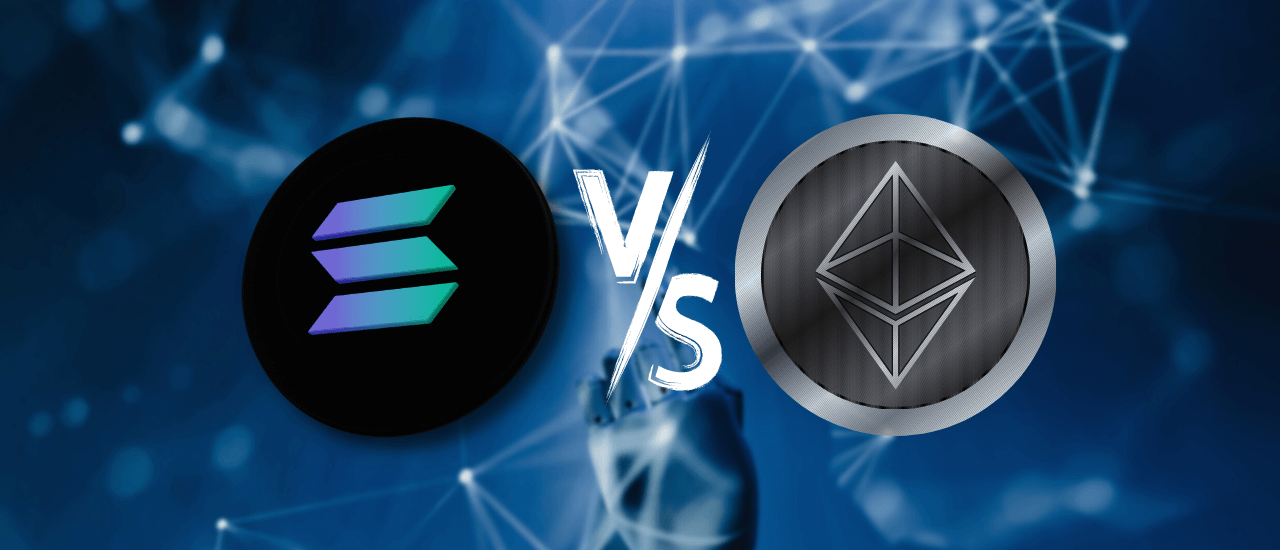
Is Solana better than Ethereum?
Introduction
The introduction of blockchain paved the way for the creation of multiple blockchain networks with have their own distinct functionalities and features. However, this also led to the growing competition amongst all these blockchains, of which Solana and Ethereum are always the talks of the town. Despite the fact that both carry different attributes, they are often compared to understand which the best blockchain is. So, let’s provide a true side of the story by understanding the characteristics of each of these blockchains in–depth.
Basic Understanding of Solana and Ethereum
Both the blockchain systems are decentralized and open source backed by the concept of smart contracts. However, they are built on different consensus mechanisms or technology and hence vary in functionalities. Solana is a high-performance decentralized blockchain that is known for its scalability and fast growth. It supports thousands of DeFi, Web3, NFTs, and other projects. On the other hand, Ethereum is the most trusted blockchain ecosystem supporting the majority of blockchain projects of all types.
While thinking of launching or hosting any blockchain project Ethereum is generally the first preference of the project owners. Being launched in the year 2015 Ethereum has a good market reputation while Solana was launched half a decade later in the year 2020 and has already undergone several fluctuations. However, let’s understand the key characteristics of these blockchains and find out which one serves the varying needs of blockchain projects.
Ethereum v/s Solana
The key differences between Ethereum and Solana can be understood through their offerings and performance. As a result, some of the major points of distinction between the two are mentioned here.
• Consensus Mechanism
Ethereum relies on the Proof of Work (PoW) consensus mechanism as that of Bitcoin’s Blockchain and provides a more decentralized network but is less scalable. Such blockchain networks are seen to be more secure and stable allowing miners to participate in the process of consensus by staking. On the other hand, the Solana blockchain follows a different consensus mechanism called Proof of History (PoH). Also, this is the first blockchain to use this rare consensus in its ecosystem. This consensus requires a sequence of computational steps to determine the passage of events cryptographically. Thus, transactions in the Solana ecosystem are placed in timely order which is not the case with Ethereum.
• Stateful Architecture
An Ethereum supports the “Stateful architecture where all transactions are recorded in the one state and in case the new transaction takes place then all miners on the network have to update their copy to reflect the new event. This process is quite expensive and slow which impacts the overall performance of the blockchain. Wherein Solana has a “Stateless “ architecture which helps to reduce the memory consumption in the overall network. Moreover, for the execution of new transactions, no update is required. It is automated and carried out sequentially making it a highly scalable blockchain.
• Transaction Speed and Scalability
The high scalability and transaction speed are the USP of Solana which means it is able to process transactions every 400 milliseconds and record 60K transactions every second. It utilized the token Byzantine Fault Tolerance (BFT) and Gulf Stream technology to remove the need for node communication and process transactions in real-time. Alongside the Turbine block propagation protocol Solana easily processes the transactions by breaking them down into smaller fragments. On the other hand, even though a long time Ethereum blockchain is limited by its ability to process a huge number of transactions, Ethereum 2.0 is the answer to its all shortcomings. Thus, its layer–two solutions are more focused on providing advanced scalability and throughput.
• Stability and Security
The age and maturity of the smart contract platform have a significant impact on the security of the blockchain ecosystem. It can be said so because an older platform comprises more established community and security research & trials. While Solana is being launched 2 years back is quite unstable. In September 2021 Solana network had gone through multiple downtimes with the longest being 17 hours at one point as a result of a hack. Lately, Solana Bridge to Ethereum was hacked leading to the loss of $320 million of stolen funds.
• Project Compatibility
When it comes to DApp development Ethereum remained the undisputed leader and supported all forms of DeFi projects such as asset tokenization platforms, cryptocurrency trading apps, KYC and identity solutions, and Crowdfunding projects. However, the invasion of Solana did create a huge impact on the monopoly of Ethereum. In less than a year itself, Solana had 400 projects on its platform majority of which belonged to NFT and DeFi space. Thus, both the blockchain are compatible to support all forms of projects.
Final Words
Both Ethereum and Solana have their own competitive advantage and stand tall to address the projects' needs in the best way possible. Inarguably, Solana provides better operational efficiency but what cannot be neglected here is the security aspects which are relatively weaker in Solana. Also, layer two of Ethereum i.e. Ethereum 2.0 holds the potential to address the shortcomings in the layer -1 architecture and meet the growing competition in the market. As a result, Solana is best for short-term projects which need quick execution but if you are looking for long-term stability for your project Ethereum shall be the primary choice.
